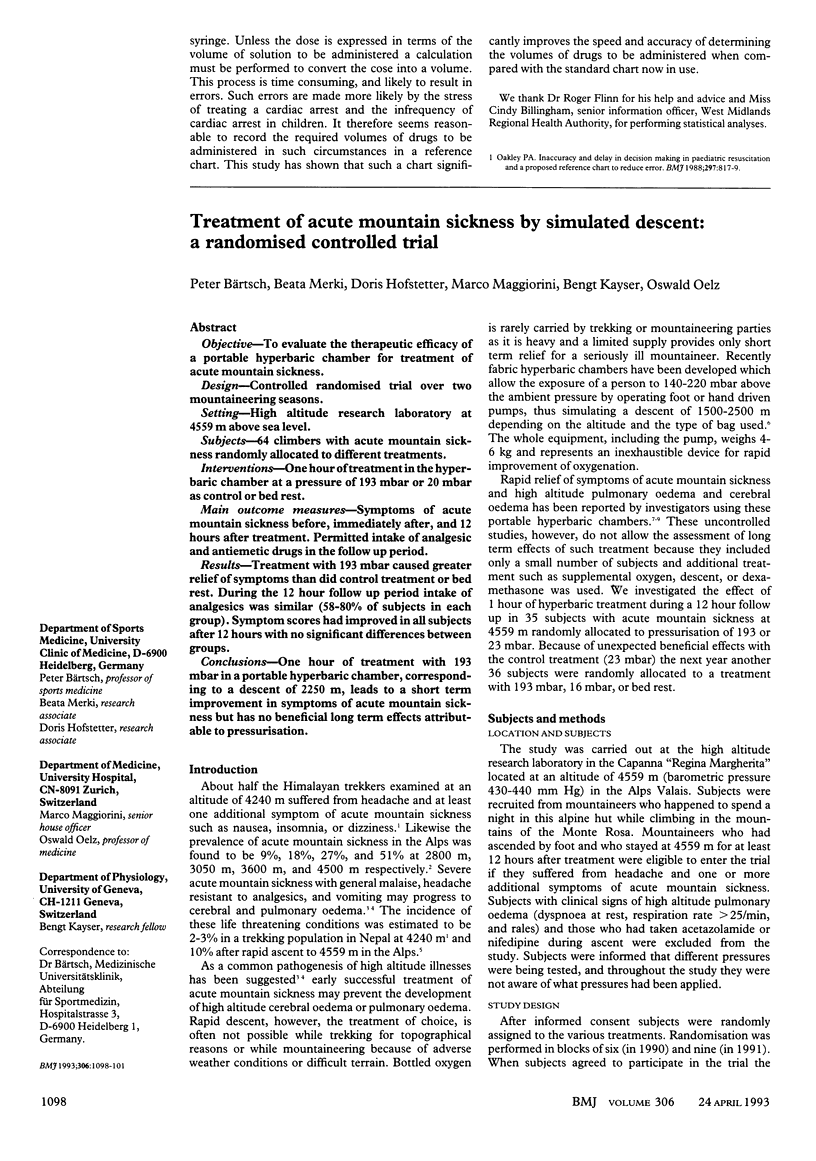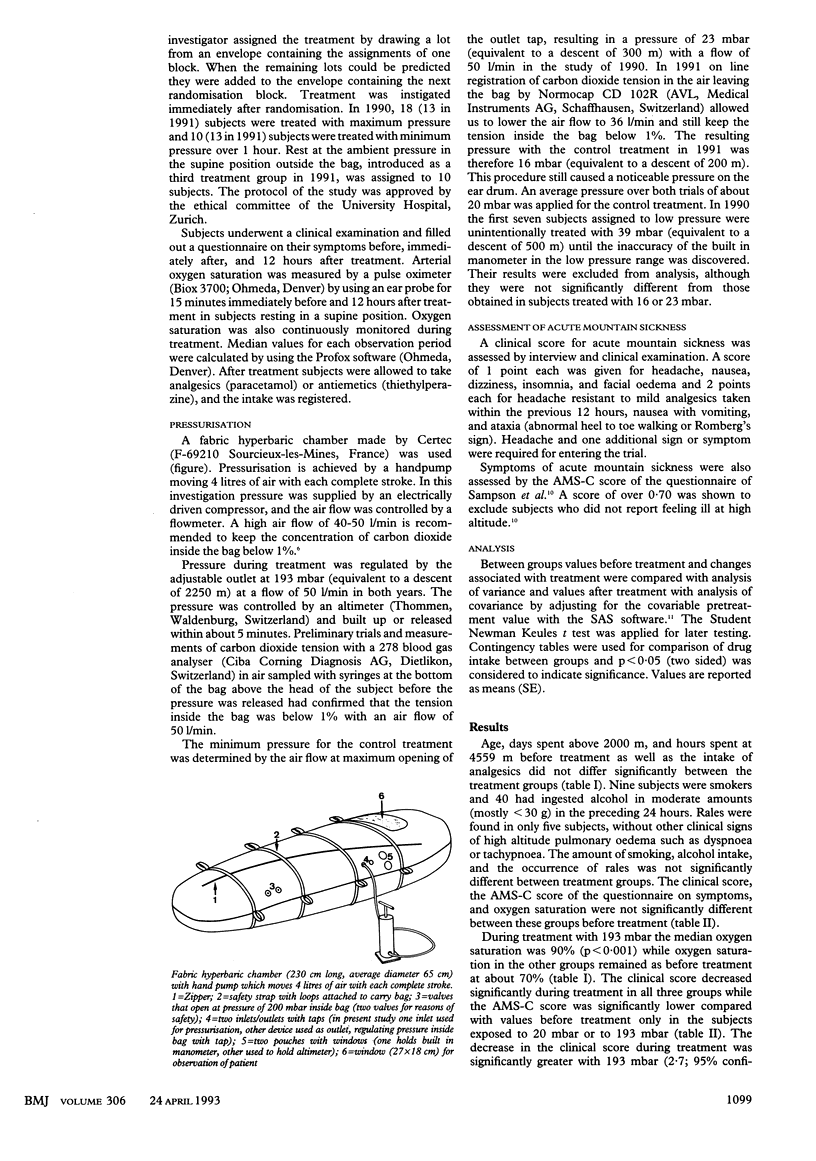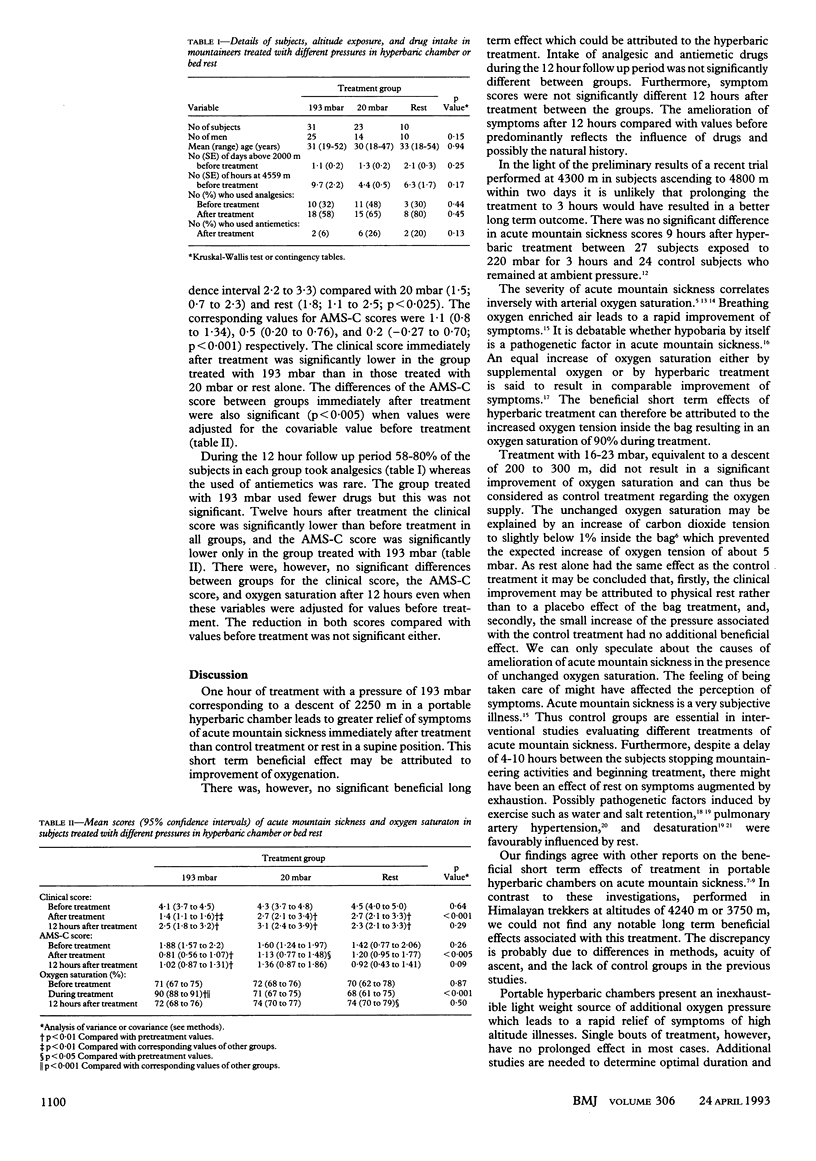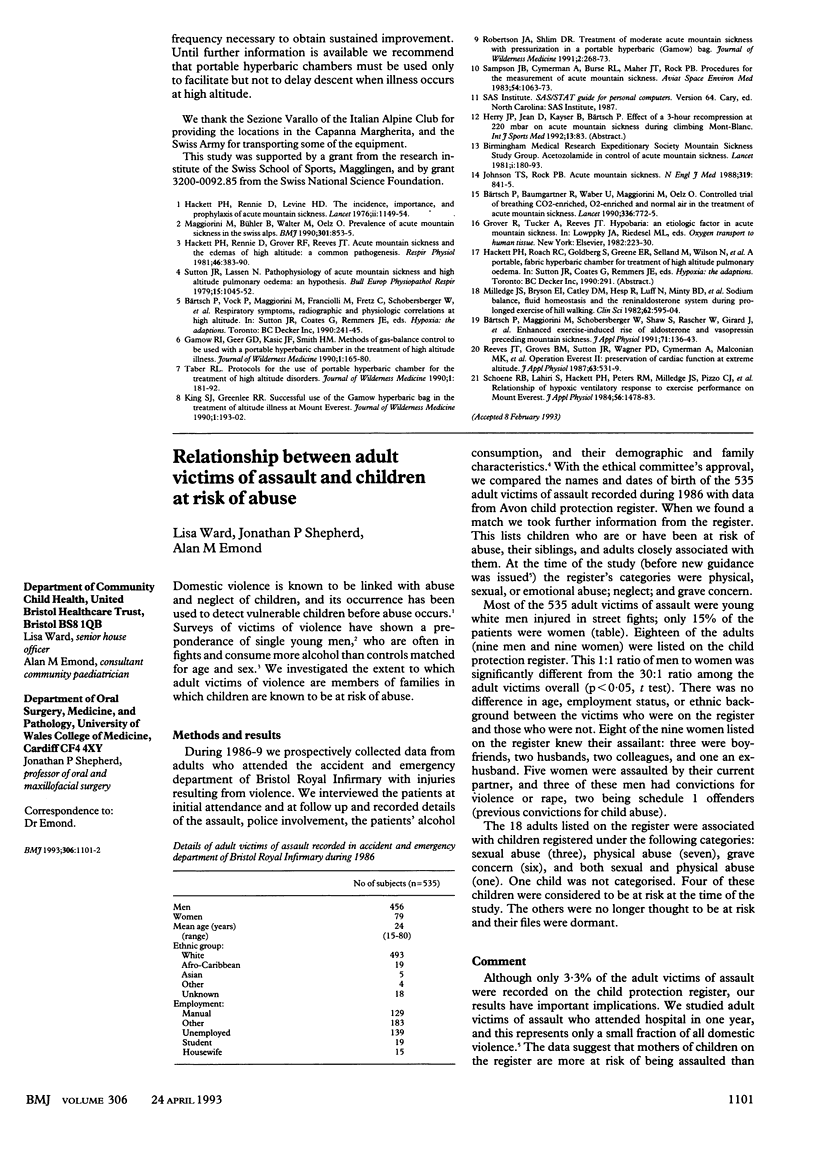Abstract
OBJECTIVE--To evaluate the therapeutic efficacy of a portable hyperbaric chamber for treatment of acute mountain sickness. DESIGN--Controlled randomised trial over two mountaineering seasons. SETTING--High altitude research laboratory at 4559 m above sea level. SUBJECTS--64 climbers with acute mountain sickness randomly allocated to different treatments. INTERVENTIONS--One hour of treatment in the hyperbaric chamber at a pressure of 193 mbar or 20 mbar as control or bed rest. MAIN OUTCOME MEASURES--Symptoms of acute mountain sickness before, immediately after, and 12 hours after treatment. Permitted intake of analgesic and antiemetic drugs in the follow up period. RESULTS--Treatment with 193 mbar caused greater relief of symptoms than did control treatment or bed rest. During the 12 hour follow up period intake of analgesics was similar (58-80% of subjects in each group). Symptom scores had improved in all subjects after 12 hours with no significant differences between groups. CONCLUSIONS--One hour of treatment with 193 mbar in a portable hyperbaric chamber, corresponding to a descent of 2250 m, leads to a short term improvement in symptoms of acute mountain sickness but has no beneficial long term effects attributable to pressurisation.
Full text
PDF



Selected References
These references are in PubMed. This may not be the complete list of references from this article.
- Beevers D. G., Erskine E., Robertson M., Beattie A. D., Campbell B. C., Goldberg A., Moore M. R., Hawthorne V. M. Blood-lead and hypertension. Lancet. 1976 Jul 3;2(7975):1–3. [PubMed] [Google Scholar]
- Bärtsch P., Baumgartner R. W., Waber U., Maggiorini M., Oelz O. Comparison of carbon-dioxide-enriched, oxygen-enriched, and normal air in treatment of acute mountain sickness. Lancet. 1990 Sep 29;336(8718):772–775. doi: 10.1016/0140-6736(90)93240-p. [DOI] [PubMed] [Google Scholar]
- Bärtsch P., Maggiorini M., Schobersberger W., Shaw S., Rascher W., Girard J., Weidmann P., Oelz O. Enhanced exercise-induced rise of aldosterone and vasopressin preceding mountain sickness. J Appl Physiol (1985) 1991 Jul;71(1):136–143. doi: 10.1152/jappl.1991.71.1.136. [DOI] [PubMed] [Google Scholar]
- Maggiorini M., Bühler B., Walter M., Oelz O. Prevalence of acute mountain sickness in the Swiss Alps. BMJ. 1990 Oct 13;301(6756):853–855. doi: 10.1136/bmj.301.6756.853. [DOI] [PMC free article] [PubMed] [Google Scholar]
- Milledge J. S., Bryson E. I., Catley D. M., Hesp R., Luff N., Minty B. D., Older M. W., Payne N. N., Ward M. P., Withey W. R. Sodium balance, fluid homeostasis and the renin-aldosterone system during the prolonged exercise of hill walking. Clin Sci (Lond) 1982 Jun;62(6):595–604. doi: 10.1042/cs0620595. [DOI] [PubMed] [Google Scholar]
- Reeves J. T., Groves B. M., Sutton J. R., Wagner P. D., Cymerman A., Malconian M. K., Rock P. B., Young P. M., Houston C. S. Operation Everest II: preservation of cardiac function at extreme altitude. J Appl Physiol (1985) 1987 Aug;63(2):531–539. doi: 10.1152/jappl.1987.63.2.531. [DOI] [PubMed] [Google Scholar]
- Sampson J. B., Cymerman A., Burse R. L., Maher J. T., Rock P. B. Procedures for the measurement of acute mountain sickness. Aviat Space Environ Med. 1983 Dec;54(12 Pt 1):1063–1073. [PubMed] [Google Scholar]
- Schoene R. B., Lahiri S., Hackett P. H., Peters R. M., Jr, Milledge J. S., Pizzo C. J., Sarnquist F. H., Boyer S. J., Graber D. J., Maret K. H. Relationship of hypoxic ventilatory response to exercise performance on Mount Everest. J Appl Physiol Respir Environ Exerc Physiol. 1984 Jun;56(6):1478–1483. doi: 10.1152/jappl.1984.56.6.1478. [DOI] [PubMed] [Google Scholar]


